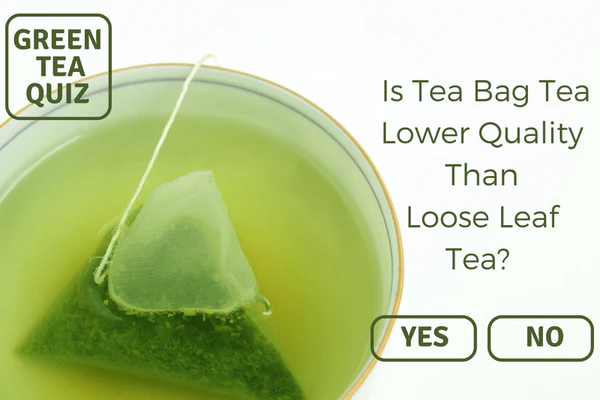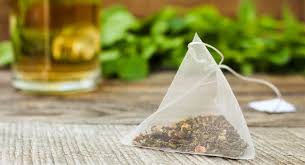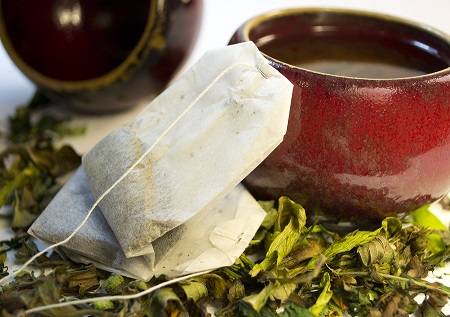Green Tea Bags Dangerous Why – 24
Green Tea Bags Dangerous Why
The many health advantages of green tea have long been recognised, including its potential to help with weight loss and antioxidant capabilities. But lately, questions have been raised about the security of green tea bags. Although moderate consumption of green tea is generally regarded as harmless, there are several elements of green tea bags that demand further investigation. In this piece, we’ll examine the possible risks connected to Green Tea Bags Dangerous Why and investigate the causes of these worries.

Pesticide Residues:
The possibility of pesticide residues being present is among the main issues with green tea bags. Growers often use pesticides to protect their crops since tea plants are susceptible to pests.
Sadly, certain residues might make their way into the tea leaves, and if they aren’t properly cleaned or handled, they might find their way into the finished product. There are concerns over the long-term health effects of regular intake of green tea due to studies showing that some brands may contain measurable quantities of pesticides.
Microplastic Contamination:
Tea bags are now part of the widespread problem of microplastic contamination. A lot of tea bags sold in stores are composed of a mix of paper and plastic fibres. Upon being submerged in hot water, these plastic parts can discharge microplastics into the tea, which could subsequently be consumed.
Although research on the health effects of consuming microplastics is ongoing, early findings point to certain hazards, such as hormone disruption and the buildup of plastic particles in body tissues.
Fluoride:
It is well known that green tea contains fluoride, a mineral that can be hazardous when taken in excess but also helpful when present in small amounts. Tea leaves contain fluoride by nature, although the amount varies according to the growth conditions of the plant.
High fluoride content has been discovered in several green tea brands, particularly those originating from specific areas. Dental and skeletal fluorosis, in addition to other health issues, have been connected to excessive fluoride ingestion.

Assuring consumer safety requires closely monitoring and controlling fluoride levels in green tea products, especially tea bags.
Epichlorohydrin Residue
The chemical epichlorohydrin is utilized in the manufacturing of some tea bag materials, especially those that are bonded or heat-sealed. This leaves behind epichlorohydrin residue. There are still unanswered questions regarding the possible health effects of epichlorohydrin exposure, despite manufacturers’ claims that very little of this chemical is used and that any residues are safe limits.
Concerns have been raised over this compound’s safety in tea bags after the International Agency for Research on Cancer (IARC) designated it as a potential human carcinogen.
Follow Our Digiknowledge.co.in Page for Latest update about Bikes, Cars, Sports, , Life style and many more.
The Quality of Leaves in Green Tea Bags
Tea Leaf Selection and Processing:
The choice and preparation of tea leaves determines the quality of the resulting beverage. Good green teas are usually brewed from fragile, young leaves that are high in nutrients and flavor. Conversely, inferior tea bags can employ older leaves or contain twigs and branches, which would degrade the tea’s overall quality.
These inferior plant bits could not have the same healthy components as premium, full leaves, and they might even taste bitter.
Tea Dust and Fannings in Tea Bags:
Some green tea bags include tea dust or fannings instead of full leaves in order to satisfy the demands of mass production and convenience. Tea dust and fannings are the tiny bits of broken leaves that brew rapidly, but they don’t always have the complex flavors and health-promoting ingredients of entire leaves.
Concerns over pesticide residues and other impurities are also raised by the larger surface area of these particles, which could expose the tea to more environmental toxins.
Oxidation and Staleness:
Green tea is prized for its vivid flavors and freshness, but these qualities can be compromised by staleness and oxidation. Tea leaves can oxidize more quickly when exposed to air or stored improperly, which can reduce its health benefits and cause flavour loss.
Tea bags may allow for more air exposure, especially if their packaging is subpar, which could lower the quality of the leaves and the overall tea experience.

Origin and Growing Conditions:
The tea plant’s origin and growing environment have a big impact on the quality of the leaves. Rich soil, an appropriate elevation, and a temperate environment are all associated with better-tasting and more nutritious green tea.
On the other hand, tea from areas with less than ideal growing conditions could be more susceptible to pesticide, heavy metal, and other pollution contamination.
To reduce the health concerns associated with low-quality leaves, it is essential to ensure that the contents of tea bags can be traced back to respectable and well-regulated tea estates.
Supplementary Components and Fragrances:
To improve flavor or aroma, some commercially marketed green tea bags could include additional components or flavorings. Allergies or sensitivity sufferers should use caution even if these chemicals are generally thought to be safe.
Furthermore, the taste of the tea may be disguised by artificial flavorings, making it difficult to tell the difference in leaf quality.
Opting for simple, unadulterated green tea bags is recommended for individuals seeking the purest and highest-quality tea experience.
In conclusion:
In summary, even though green tea’s health advantages are well acknowledged, it is nevertheless important to carefully evaluate the safety of green tea bags. Examining the quality and production methods of green tea products is crucial because of the possible risks connected to pesticide residues, microplastic contamination, heavy metal buildup, fluoride content, and epichlorohydrin residue.
Customers should choose trustworthy companies that put safety and openness in their manufacturing processes first, and they should be aware of the origin and production processes of the tea they purchase.
Furthermore, for individuals who are worried about possible hazards related to specific bag materials, using loose-leaf green tea in place of tea bags can be a safer choice.
Is green tea bag safe?
Naturally not! If you’ve been drinking green tea (bag) after lunch and dinner in the hopes of seeing some noticeable changes, you’re very wrong. The green tea bag is the least beneficial and most artificial type of tea. Green tea leaves are a better option, according to even health experts.
Can I drink green tea on empty stomach?
Although it’s a nutritious drink, not everyone should have it first thing in the morning on an empty stomach. Because this herbal tea contains tannins and caffeine, some people may experience acid reflux or stomach discomfort.
Can we add honey in green tea?
Since honey is a healthy substitute for sugar, it’s a great choice to add to your green tea. Your green tea becomes less bitter as a result. Together with honey’s many vitamins and minerals, green tea’s antioxidants make this a very healthful beverage.



